The Outback is uniquely Australian. If you live in Australia or visit Australia, you can’t help but hear a lot about it.
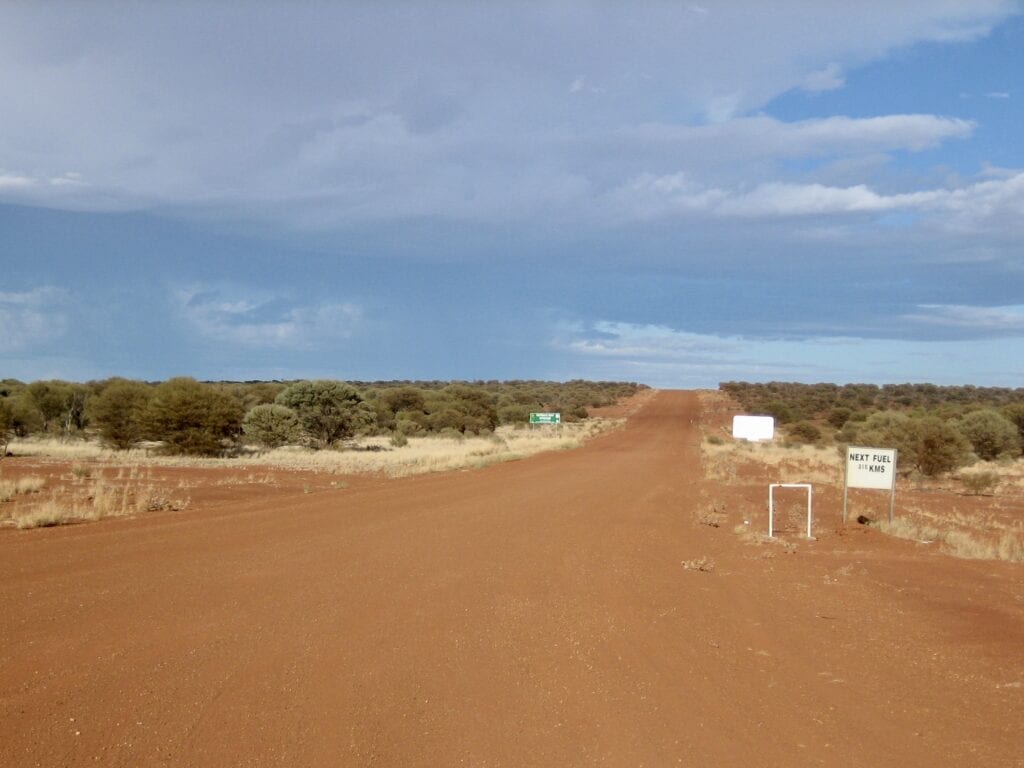
It’s etched deeply into the Australian psyche… the image of a stockman on a horse, sleeping rough and living on his wits… the ingenuity and resilience of Aussie farmers, making do with what they have. Huge distances, drought, floods and hardship.
The “true” Australia, whatever that means.
This undercurrent runs strongly through us. It’s an image promoted around the world, a marketer’s dream. The tough Aussie Bloke, fiercely independent, cool under pressure and able to handle anything thrown his way.
The reality? Australia is one of the most urbanised and multicultural countries in the world!
Yet we cling to this imagery of who are. Maybe that’s why we wrap the Outback story around us so tightly. It’s a symbol of how we’d like to be… rather than who we really are.
But what is it? And where is it?
The thing is, there’s no easy answer. It’s more a state of mind than an actual place. So let’s try and clear up these questions… and cover off a whole lot more about the Australian Outback as we go.
By the way, if you have any other questions about the Outback, let us know in the Comments. We’ll do our best to answer them for you.
- What Is the Outback of Australia?
- Readers’ Definitions of What The Outback Means To Them
- Where Is the Outback?
- More Names, More Confusion
- Where Is the Australian Bush?
- How Big Is the Outback?
- Why Is the Outback in Australia Unpopulated?
- How Much of The Outback Is Unexplored?
- Why Is the Outback Red?
- Why Is the Outback Dangerous?
- How Hot Does the Outback Get?
- Why Is the Outback So Dry?
- What Animals Live in The Outback?
- In Summary
What Is the Outback of Australia?
What “the Outback” means… hmmm. Well, it depends on who you are and where you live. Broadly speaking, the Outback is wide open spaces with no one else around. Hot, dry, dusty, remote and isolated.
But that’s a pretty broad definition!
One person might consider a certain location to be remote or isolated, but another might think it’s regional or “in the bush” (we’ll get to “the bush” soon).
If you’ve only ever lived in a city, you might think of the Outback as anywhere away from the cities.
For example, if you’ve lived on the East Coast of Australia all your life, you might think of anywhere over the Great Dividing Range as the Outback. By the way, you’d be surprised how many east-coasters have never been over the Great Dividing Range.
But if you live in a regional area, there’s no way you’d consider it as Outback. To you, Outback is somewhere out west… dry, hot, dusty and remote. No, you live in “the bush” not the Outback.
What if you’re from overseas? In your eyes, anywhere outside the major Australian cities could qualify as the Outback.
Imagine a European tourist landing in Perth, hiring a camper then heading north up the coast. Once they leave the suburbs behind, it’s pretty sparse.
Sure, there’s plenty of farming country. But to a newcomer, it’s a vast landscape of low scrub with hardly a soul to be seen. To an overseas traveller, this is the Outback for sure! But to locals, it’s not the Outback. It’s regional… rural farming country, the bush.
Now, what is the meaning of the word “Outback”? Where did it originate?
It started as a general term way back in the 1800’s, meaning somewhere beyond civilisation. Out the back of Bourke or out the back of Kalgoorlie for example. Hot, arid country with little water and generally hostile to humans.
Pretty quickly, “out the back” was shortened to “out back” and the term stuck.
Some people believe it originated in the U.S. They used outback to describe their back yard, as in “Let’s go sit out back”.
I’d say this is highly unlikely. It’s a completely different context. Plus, Australia was strongly influenced by the British rather than the U.S. back then. A U.S. term would have struggled to gain a foothold.
Readers’ Definitions of What The Outback Means To Them
One of our subscribers Gerardus sent in his thoughts and observations of the Outback… what is means to him. Here’s his thoughts (I’ve edited it slightly, without changing the meaning and intent).
I am 72 and have travelled Australia with my military carrier, then when I retired at 60 I found the real outback.
- Where the population is less than 10 people over 10,000 square kilometers.
- A place where you see wild animals like you would see cattle and sheep in the farming communities. A place where wild animals are as curious as you the traveller is, and come in to have a closer look.
- The outback has no tarred roads , very few signs to tell you which way to go, a place where, if you are not self-sufficient, you will get into trouble.
- A place where you need to carry as much fuel as you can, have a truck load of spare parts and another set of tyres.
- A place where if it rains 2 mm you will get bogged, a place where the bulldust gets inside your undies :), a place where wild flowers will completely amaze you.
- The emptiness, no cars, no hoons, the odd aeroplane or small helicopter.
- The farmer with whom you can spend a whole day just talking of where you have been and being advised of what could lay ahead.
- A place where ,when you can find some station who will sell you fuel at over $2.00 a litre and quite understandably so.
- A place where the water in the lake is too salty to drink.
- A place where the first people still hunt and live as they did thousands of years ago.
- A place where if you want to travel you DO NOT GO WITHOUT AN EPIRB.
- It is not a lonely place, the people who live out there are not to be feared like in the populated areas where you will get robbed, and will get hurt.
- A place with clean unpolluted air. Wide open skies with a gazillion stars to see at night time.
- A Place where one can see (if they are lucky) the strange phenomena of Ball Lighting.
I could write a book about the outback, about adventures that most people only dream about. About the time I got involved fighting fires for a fortnight to save a property owner’s house and livelihood (these people stayed in touch with us for years later).
Yes I still travel there, to the outback, and stay there for weeks at a time, always looking for a different area, somewhere where few have stood on the ground. Somewhere where you find honest, friendly, trustworthy people. Somewhere where the silence is deafening.
That is the outback to me.
I love the outback and hope to be around for many more years to see many more new places. One lifetime is not enough to explore this beautiful country.
Gerardus
What a brilliant description! Thanks again Gerardus.
Here’s another one from Ian. I especially love the first line…
To me its the ultimate reality check.
A place where self reliance is number one.
To sit around a campfire and gaze at the millions of stars and realise that each one could be a planet like this, is a humbling experience.
There is nowhere on earth like the outback, it a place of two extremes, one of extreme beauty, the other extreme harshness. I always enjoy the privilege of visiting it.
Ian
See more excellent thoughts and ideas about the Outback from our readers, in the Comments at the end of this article.
Where Is the Outback?
Again, there’s no simple answer. It’s a matter of perspective.
Some people define the Outback as the desert country of Australia. Is the Outback a desert? Well, by definition a desert is a hot, dry region with less than 250mm (10 inches) of annual rainfall.
The word “desert” conjures up endless sand dunes stretching to every horizon, shifting and forming huge dunes as constant winds push the sand across a bare landscape… a landscape similar to the Sahara Desert.
Yes, many Australian deserts have sand dunes. But the vast majority are stable and covered in vegetation. Technically, the Nullarbor Plain is a desert because it averages way less than 250mm of rain per year. But there’s not a sand dune in sight!
The Kimberley right up at the top of Western Australia is definitely in the Outback, but there’s no way it’s desert.
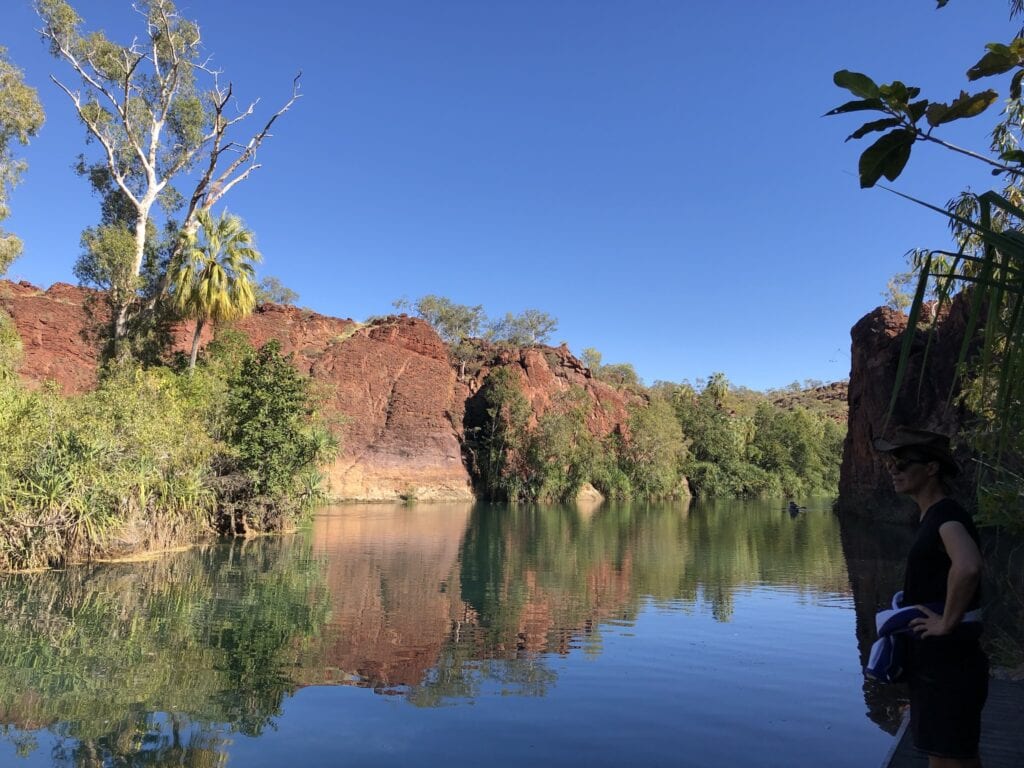
To say the Outback is the desert country of Australia simply isn’t accurate.
In some ways, Outback is a state of mind. Australia has a narrow strip of arable country down the East Coast and hooking around the bottom into South Australia. And there’s a few other pockets like South-West Western Australia, around Darwin or along the western slopes of the Great Dividing Range for example.
But the vast majority of the Australian inland is arid, hot and forbidding to the unprepared traveller.
This map will give you a rough idea of where the Outback is in Australia.
Not everyone will agree with our definition. Like we said earlier, just about everyone has a different idea of what and where the Outback is.
But at least the map gives you some idea of how much of Australia is considered to be Outback.
If you’re from overseas, now you might understand why Australians look at you with a bemused expression when you innocently ask, “How far is the Outback from Sydney?”
If you’re just starting to figure out this whole Outback thing, well done! Strap yourself in though, it’s about to get even more confusing…
More Names, More Confusion
It seems Aussies like creating names for just about anything.
Somehow, we’ve ended up with a whole lot of vague regions which our state’s tourism commissions like to massage and stretch to suit their agendas.
The Top End vaguely describes an area roughly encompassing the Kimberley and northern parts of the Northern Territory… except most of the time, the Top End only refers to places in the Northern Territory.
The Red Centre most often refers to the red desert country north and south of Alice Springs (or “The Alice”), in a band across the Northern Territory from west to east… except when people sometimes include parts of Western Australia, South Australia and even south-western Queensland!
And while the Northern Territory calls the northern parts The Top End, cross the border into Queensland and it becomes Far North Queensland or simply FNQ… except when you move east, where it’s also referred to as TNQ or Tropical North Queensland.
And then you take all of these and discover they overlap parts of the Outback… depending of course on whose definition of the Outback you’re using.
Yes, it’s confusing! ?
Now are you beginning to understand why it’s so hard to define the boundaries of the Outback on a map?
Where Is the Australian Bush?
The Aussie “bush” is another term with multiple meanings, depending on how you use it.
If someone “lives in the bush” or they’re “from the bush”, then they live outside of major cities. They might live in a town, yet they’re still in the bush.
Where is the Australian bush? Pretty well anywhere outside a city. But not necessarily…
Broken Hill’s a major regional city in far-western New South Wales. Most Aussies would say Broken Hill’s in the bush and that anyone from Broken Hill lives in the bush. Yet it’s a city…
And once again, it’s a matter of perspective. To someone in Brisbane, a person living in Dalby (a large rural town inland from Brisbane) lives in the bush. But someone living on a farm outside of Dalby, would say that same person lives in town!
Now to get your head spinning even faster, consider this. The tiny town of Birdsville in far South-Western Queensland is in the Outback. But it’s also in the bush.
So someone living in Birdsville is from the bush, often referred to as a “bushie”… even though they live in the Outback.
What does this mean? It means the Outback is in the bush, but the bush isn’t always in the Outback. Phew!
Like the “Outback”, the “bush” means different things to different people. Regardless, the term “bush” has a definite rural feel to it. Anyone who lives on a farm or a station lives in the bush. By extension, this usually includes towns or even cities servicing those rural areas.
And… it has another, different meaning.
The Australian bush also describes our natural forests, usually eucalypts. Any forest – no matter how big or small – can be called the bush, even in cities.
Someone’s house might back onto a creek, which has a 10 metre wide strip of trees between their back fence and the creek. Aussies would call that “bush”. They might walk their dog in the bush every afternoon or go for a walk in the bush, for example.
Then one weekend, those same people go to a national park which is covered in an enormous eucalypt forest. It stretches as far as the eye can see in every different.
Yep, you guessed it… that’s “the bush” too!
Anywhere that’s covered in trees, bushes and undergrowth qualifies as bush. Size doesn’t matter. It could be half an acre or half a million acres.
How Big Is the Outback?
Short answer? Bloody big!
See the shaded section in our map above? It covers about about 6 million km2 (2.3 million square miles). Remember of course, this is a rough outline of where we believe the Outback lies.
Let’s put this into perspective:
- The USA covers just under 10 million km2. So the Outback is about 3/5 the size of the entire USA.
- Take Alaska out of the equation and the Australian Outback jumps to about ¾ of the size of the USA.
- Europe is also around 10 million km2. Imagine 3/5 of Europe as hot, arid country with just scattered settlements.
- 24 United Kingdoms (England, Ireland, Scotland and Wales combined) would fit into the Outback.
So yes, the Outback is vast… roughly 3,500km across and over 2,000km from top to bottom at the widest parts. How many miles is this? Around 2,100 x 1,200 miles.
Why Is the Outback in Australia Unpopulated?
It’s not. The Outback is dotted with large cattle stations, mines of all descriptions, small settlements, towns and even a few small cities.
Perhaps a better question is, why is the Outback so sparsely populated? Simple answer. Because it’s hot, dry and arid.
Imagine you decided to buy an Outback station. To be profitable, you’d need a huge area of land. Stocking rates can be around one cow per 40 hectares (100 acres) or one sheep per 4 hectares (10 acres), sometimes even less.
Put another way, you need a patch of ground one kilometre long by 400 metres wide to run one cow! And that’s in a season with average rainfall. In a bad year, you might have to de-stock altogether.
That’s why Australia has massive cattle stations like Anna Creek Station in South Australia. This one station is 24,000 km2 (2.4 million hectares)… which by the way, is quite a bit bigger than the entire country of Wales.
In fact, all of the top 10 biggest stations in Australia are over 1.2 million hectares. That’s equivalent to a block of land 120km by 100km.
The other dominant industry in the Outback is mining. Australia has a huge variety of minerals, plus coal and gas. But mining doesn’t require many people these days and most mines now have their own accommodation, with the mine workers being FIFO (fly-in, fly-out).
Then there are aboriginal communities scattered all through the Outback. These communities obviously need the usual supplies… food, fuel, building materials and so on. But they’re generally serviced from larger towns or cites, often thousands (yes, thousands) of kilometres away. Just one road train is usually enough to keep them going for quite a while.
Then you’ll find towns like Newman in the Western Australian Pilbara which exist to service nearby iron ore mines.
Broken Hill in New South Wales is another. It’s both a mining town (a city, actually) and a vital service town for a huge area over 330km north to and beyond the Queensland border.
In short, most Outback towns are kept alive by farming, mining and tourism.
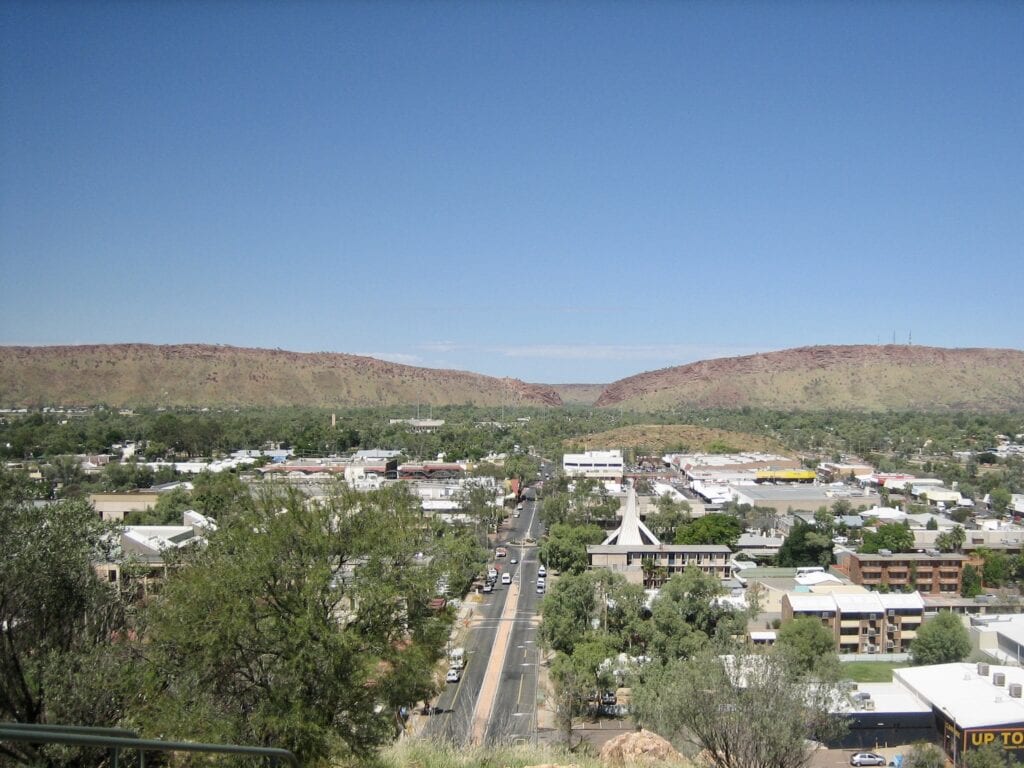
How Much of The Outback Is Unexplored?
There’ll always be small pockets where no human has even been… perhaps in the most remote parts of the Kimberley in WA for example.
But Aboriginal people have been here for at least 65,000 years. They spread out and lived in all parts of Australia, including the desert country. It’s a fairly safe bet that in the span of 65,000 years, just about every nook and cranny has been visited by man.
And since white man arrived, pastoralists took huge swathes of land for agriculture. Then came mining, which means on-going exploration in even the most remote parts of the country.
So despite its vast size, by now the Outback has been pretty well “discovered” and explored thoroughly. After all, we’ve had over 65,000 years to explore it…
Why Is the Outback Red?
The iconic red colour of Outback Australia is caused by iron oxide in the soil. As the iron is exposed to air and water, it rusts and turns a deep red colour.
As a rule of thumb, the darker the colour, the older the soil is.
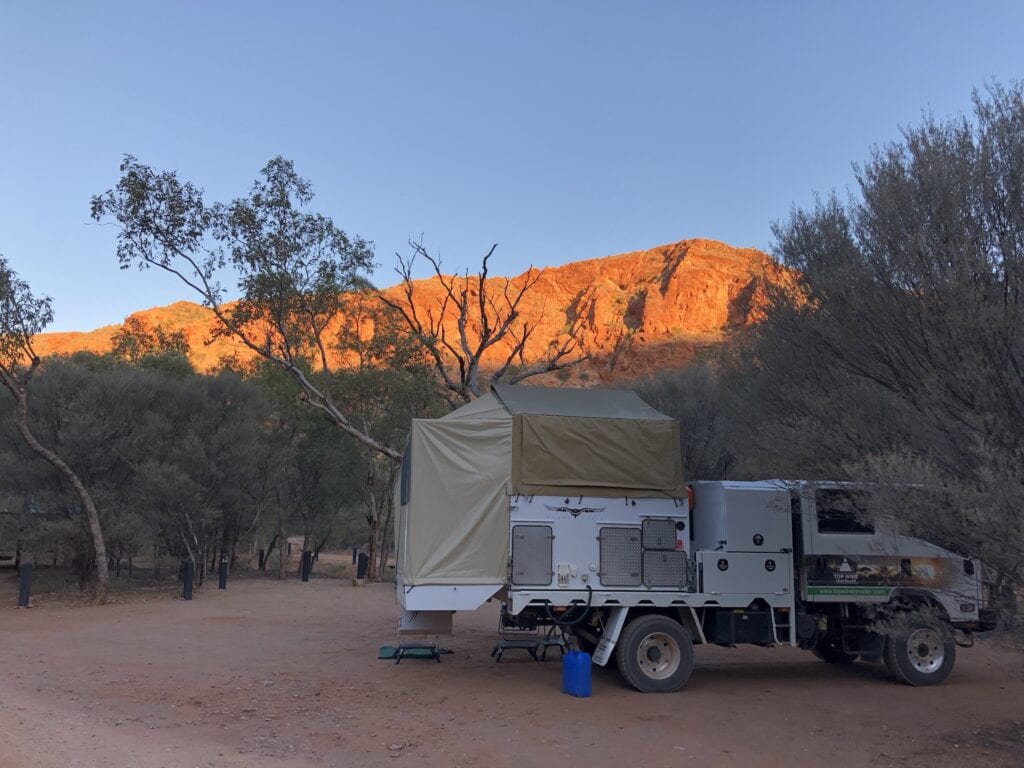
However, the Outback’s not only red. It’s full of colours, subtle hues which combine to make the Outback a spectacular place. For example, you’ll come across regions of white-grey sand or soil.
These are generally caused by large bodies of water somewhere close. After big rain events, water accumulates in normally dry lake beds. The water leaches out the iron from the soil, removing the red colour. Then when the lakes dry out, wind blows the sand and soil across the landscape.
A good example of this is at Lake Pinaroo in New South Wales. Another is Paruku (Lake Gregory), in the desert country of North-East Western Australia.
Why Is the Outback Dangerous?
The Outback is only dangerous if you’re unprepared.
How dangerous is the Outback? It can kill you within hours if you’re unprepared. If juicy stories of murders in the Outback spring to mind, then you’re about to be disappointed.
The danger’s not crazy blokes with guns who supposedly torture then kill backpackers for fun. While they make a good story, these horrible events are extremely rare.
Heat is what kills… and the dehydration that follows.
Never underestimate the Outback. A combination of not being prepared, isolation and heat can turn a small problem (like a flat tyre) into a life-threatening emergency within hours.
We’ve put together several articles on how to prepare and travel safely in the Outback. They’re packed with simple tips on how to best prepare for any Outback trip.
With careful preparation, you can be relatively safe in the Outback.
Related Resources: Download “Our Top 13 Tips For Travelling in the Outback – A Traveller’s Guide” from our Free Resources page.
The other hazard is the massive distances, often on unsealed roads. It’s not unusual for a gap of 300km (180 miles) between service stations… often way more.
For example, the Burke Developmental Road in Far North Queensland is an unsealed road, often rough, washed out and corrugated. It’s over 560km (335 miles), with nowhere to re-fuel.
These massive distances regularly catch out overseas tourists and unprepared Aussies alike. Do your homework before heading off… check distances between fuel stops and be prepared for the unexpected.
How Hot Does the Outback Get?
Some Outback places can push towards 50°C in Summer. And the ground temperature can easily get to 75°C or even higher.
And there’s no relief.
You can’t retreat to a shady grove of trees. The air temperature and heat radiating off the ground make it feel like you’re getting slowly cooked from the ground up. In some ways, you are.
It’s difficult to convey just how debilitating this relentless heat can be. A simple task like changing a flat tyre can become a strenuous job in that heat. And you actually struggle to drink enough water to maintain hydration.
In stark contrast, overnight temperatures in Winter can drop to below freezing in the desert.
Why is the Outback so hot? Well, because of the huge expanse of arid land and the prevailing winds. In Summer, the dominant winds across Australia are from the west and north-west.
Remember, we’re upside down here… opposite to the Northern Hemisphere. So as you move north, it gets hotter.
Winds start out over the tropical oceans of the north, meaning they’re already warm before they reach the coastline. Then as the winds move across the continent, they pick up more heat from the sun-baked land. The heat builds and builds.
This heat can last for weeks on end. Eventually, relief will come when a strong weather system pushes up from the south.
Why Is the Outback So Dry?
We just spoke about Australia’s hot, dry winds across much of the continent. Well, they’re not exactly conducive to rainfall.
Plus, there’s no high mountain ranges all the way from the north-west coast of Western Australia until the Great Dividing Range down the eastern seaboard. So there’s little opportunity for moisture to build for a distance of well over 3,000km (1,800 miles).
So, how often does it rain in the Outback? Not very often. The most likely time is during the Northern wet season, between December and March. If a big system like a cyclone forms off the west coast, it may track across Australia. This could bring no rainfall or it could bring huge dumps of rain, flooding vast inland areas.
Rainfall is sporadic and unpredictable.
What Animals Live in The Outback?
You and I might look across a vast shimmering plain of gibbers and think nothing could possibly live there.
But they do.
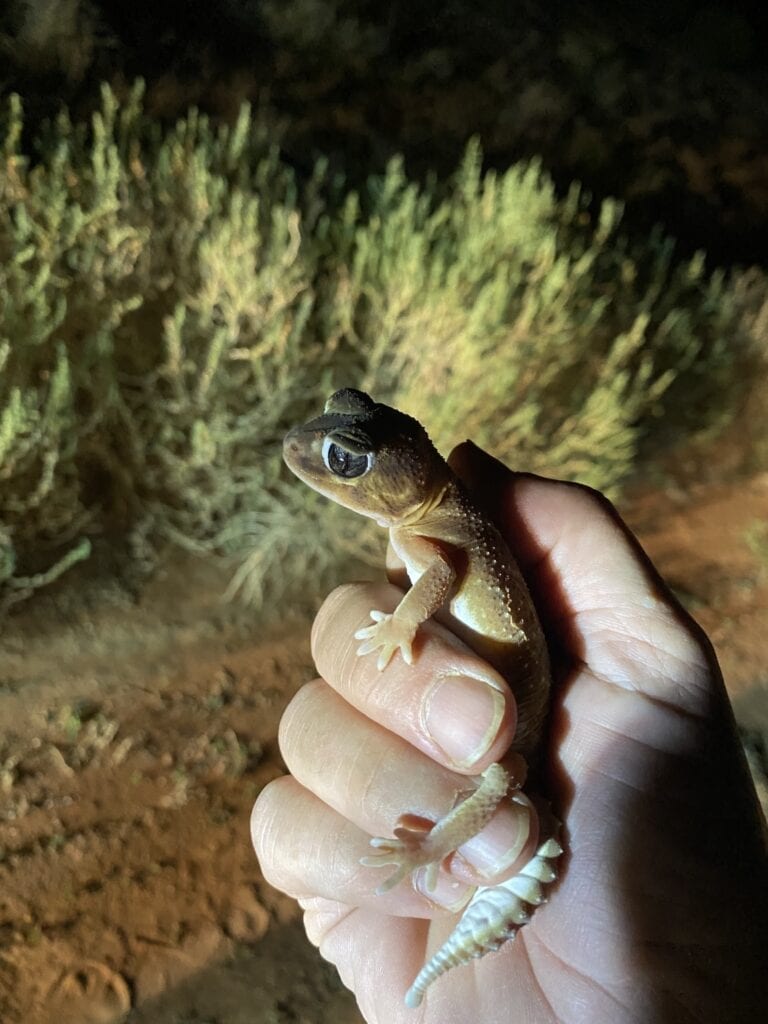
Better-known Australian species like kangaroos, dingoes and emus live wherever there’s some food and a water source. But in the places where there’s no water, you might be surprised to learn of the abundant species that survive in this extreme environment.
Remember, we’re talking about a humungous stretch of land with vastly different environments… from desert country to tropical wetlands, and everything in between. So it’s impossible to identify even a fraction of the species living in the Outback.
Instead, we’ll group them into a few categories.
There are the reptiles:
- Deadly venomous snakes like taipans and browns,
- Non-venomous snakes like pythons and blind snakes,
- Large goannas like perenties and lace monitors,
- A huge range of lizards, from goannas all the way down to tiny, cute geckos,
- Saltwater and freshwater crocodiles.
Frogs? A huge variety… from those you’ll find in creeks and wetlands to burrowing frogs, which live deep in the desert sand and only appear after rain.
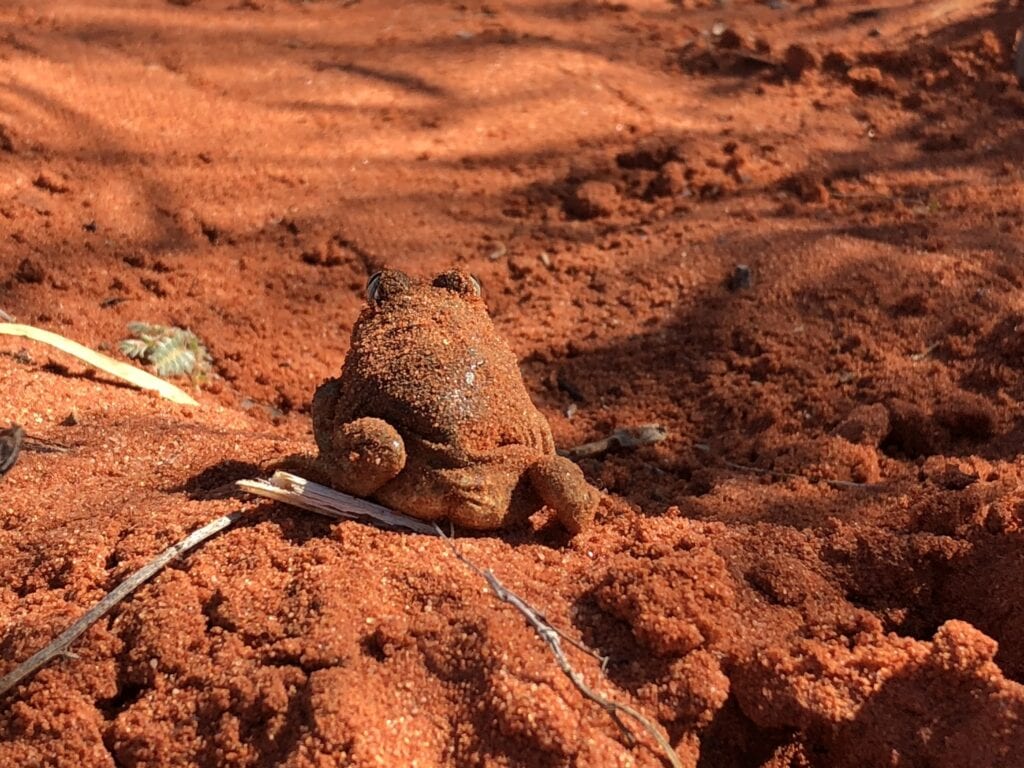
We’ve all heard of kangaroos and wallabies. But very few people are aware of a much bigger group of marsupials. Sadly, most have been driven out of their territory by a combination of:
- Agriculture,
- Land degradation due to over-grazing, land-clearing and rabbit/mouse plagues, and
- Feral animals.
We’re talking about little creatures like:
- Bilbies,
- Quolls,
- Bandicoots,
- Mulgaras,
- Dunnarts
…to name just a few.
Then there’s the native rodents. For example:
- Hopping mice,
- Forrest mice,
- Stick-nest rats and so on.
Feral animals are disastrous for native animal populations. Predators like cats, foxes and wild dogs (not dingoes) can quickly wipe out these small creatures.
Then they have to contend with feral rabbits, pigs, goats, horses, donkeys, camels and even buffalo… not to mention sheep and cattle. These creatures compact the soil, strip it of vegetation and can foul or destroy natural water sources.
In short, there’s a huge variety of animals living in the Outback… and we haven’t even mentioned birds and insects. The native ones have adapted some extraordinary techniques to survive and thrive in the extreme conditions of the Outback.
In Summary
The Outback is an incredible place. Don’t fear it, respect it. As First Nations People rightly say, if you respect Country then it will look after you.
Despite the common perception of the Outback being a harsh and forbidding place, it’s actually extremely fragile. Far from being a free-for-all playground for overlanders and 4×4’s, it needs to be treated with care and respect.
Just make sure you understand the potential dangers first. Be well prepared, then get out there. It’s the best place on Earth!
P.S. If there’s something we haven’t covered, let us know in the Comments below.
Related Resources: Download “Our Top 13 Tips For Travelling in the Outback – A Traveller’s Guide” from our Free Resources page.
Any questions or comments? Go to the Comments below or join us on Pinterest, Facebook or YouTube.
Any errors or omissions are mine alone.

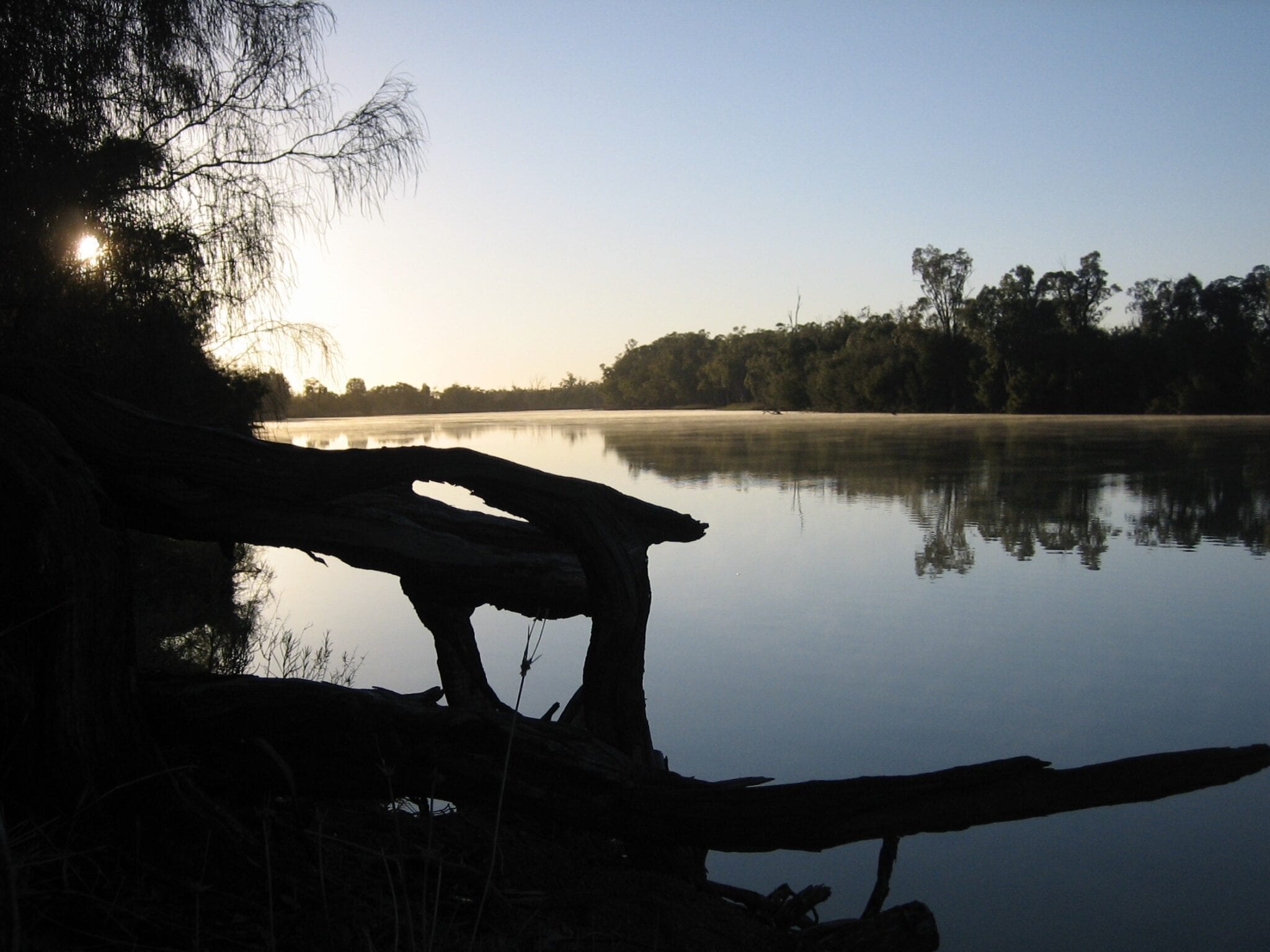
Great defining article.. you’re ALWAYS spot on the mark.
How about the crappers who don’t bury it and cover the environment with loo paper.
Pedal to the metal..before Anna has a vision to lock you out.
Hi Denis,
Thanks! And you’re spot on about the loo paper, unfortunately. Cheers, Andrew
The country – the cleared and intensively farmed areas of Australia.
The bush – the uncleared or farmed areas of Australia which have not been cleared at all or very much.
The outback – it starts when facilities you expect become either sparse or non-existent. For me, as an Australian who traverses the Nullarbor regularly, it’s not the outback. But for someone who is about to travel it for the first time, Australian or from overseas, it’s definitely the outback. My outback has “holes’ in it, for towns and settlements, so Alice Springs and Katherine are not the outback – but a few kilometres out certainly is. Perhaps a better definition for me of the outback is “where people are pitted against the country and every human you meet has to be an ally and friend, when needed.”
Hi Doug,
Great definitions, thanks for your thoughts. We feel exactly the same about the Outback, regarding perspective. It depends on who you are, where you live and your knowledge of the country. Cheers, Andrew
When we live in WA, the outback is usually East for us, like a trip across the Great Central Road from WA to the East coast.
Driving from Perth to Darwin doesn’t involve the Outback as there are sealed roads and towns ever 300 to 400 kms.
Hi Pam,
It’s interesting how different our definitions of the Outback are, depending on where we live. I think most people who didn’t live in Perth would definitely classify Perth to Darwin as the Outback, at least parts of it. Your comments show how difficult it is to define where the outback starts and finishes. Cheers, Andrew
When the roadsign says you are entering a remote area make sure you have adequate spares you think Maybe it’s just a bit harsh. But when you don’t see another vehicle for maybe five or six hours reality starts to sink in. The what if’s start to play on your mind. That’s what remote is!
Safe travels.
Hi Robert,
That’s a great point. I know exactly the feeling you’re describing. And when you glance at the GPS and see you’re a tiny dot on a vast continent, it can be a bit unnerving.
Cheers, Andrew